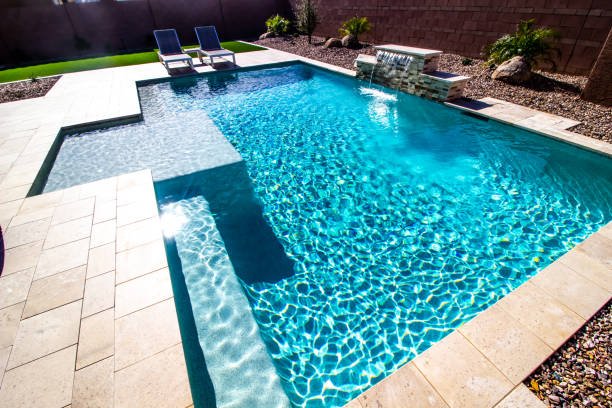Revitalize Your Pool Area With Stylish Rubber Surfacing Options
RH Business Marketing Solutions
A swimming pool is a wonderful addition to the family backyard, especially in the hot summer months. A pool brings hours of joy to long days and warm nights, but it is important to keep up not just the pool itself but also the surrounding area for aesthetic appeal and safety. If you have a backyard pool and are looking for ways to revitalize this space for the summer while also adding some extra safety, consider rubber surfacing options. The surfacing area around the pool is one of the most crucial elements of a good swimming pool, adding potential for decorative and functional options. Consider some of the following points:
Benefits of Rubber Pool Decking
There are many reasons to consider adding rubber surfacing around your pool to revitalize the space.
Easy Maintenance
Rubber requires much less effort to maintain than concrete or tiles. Whereas other surfaces frequently require re-caulking or other sealant, rubber only needs the occasional hosing down with mild soap to stay looking new. It is also resistant to mold and mildew.
Slip resistanT
Perhaps one of the greatest advantages of a rubber pool surface area is the security that rubber surfaces offer against slips and falls. The best pool decks are slip-resistant when wet, and rubber is one of the best materials for this purpose.
Appearance
A synthetic material like rubber can come in a variety of different colors, textures, designs, or patterns. This means that no matter what your pool itself might look like, there is a rubber surface that matches the pool and the surrounding area and enhances its appearance.
Cost effective
At first glance, it might seem like rubber pool decking is more expensive than wood or concrete. However, in the long run, rubber is more durable and reduces the need for repairs and replacement. It is also much easier to repair in the event of damage.
Resistant to cracking
Concrete and wood look great when they are first installed, but over time, between weathering and traffic, cracks and dents develop and become unsightly. Rubber surfaces, however, are more flexible, shock-absorbent, and resilient to harsh weather conditions.
Eco-friendly
Many companies that install rubber pool decking make use of recycled rubber when appropriate, making rubber decking an eco-friendly option for those who have concerns about the environment.
Stylish Options
Rubber is a very versatile material, and the availability of different colors and textures makes it useful for nearly any design choice. You can inset images, such as logos or custom designs, against lighter backgrounds, incorporate various texturing or designs into the overall layout, and choose from a variety of surfaces to suit nearly any pool style. If the area surrounding your pool is drab or dull, a brightly colored rubber surface can brighten up the space quite a bit. Reds and blues work great for sports complexes and workout areas, while greens and yellows add a bit of a tropical flair to a backyard. If you want to see what different surfaces and colors look like, head over to SoftRoc’s website and make use of their Color Blend Visualizer to see how your favorite colors match up!
Rubber vs. Concrete
There are many advantages to choosing a rubber pool surface over concrete. To begin, rubber is cooler and does not hold heat as well as concrete does. It can be rather annoying to get out of the pool after a refreshing dip only to have your bare feet stung by hot concrete. Rubber is far more slip-resistant than concrete, especially some forms of concrete that turn very slick when wet. Concrete usually comes in a flat gray color, and some concrete companies do not even offer the option to add color, while rubber allows for direct application in a variety of colors. Rubber expands and contracts easily in the summer heat, whereas concrete simply cracks over time. While concrete has its own benefits, rubber is far more durable and flexible.
Summer is approaching, so make sure your pool area is ready for fun by adding some safe and colorful surroundings to your drab pool decking.











